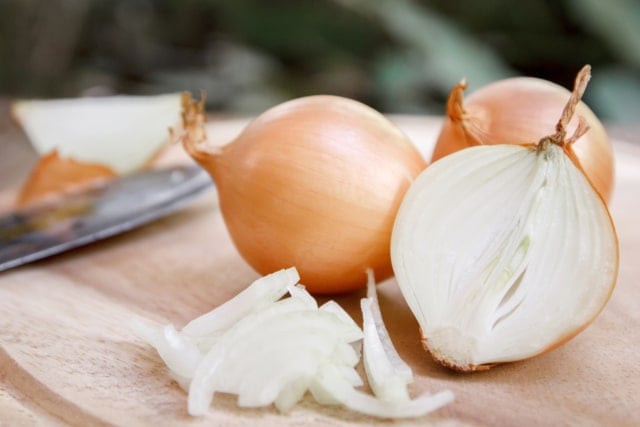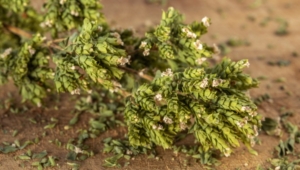6 Health Benefits of Cottage Cheese & 13 Tips and Recipes

Cottage cheese is one of the underrated types of cheese. People don’t usually get excited about it because of its curdy texture. Learn here everything about the health benefits of cottage cheese as well as potential risks.
Although this cheese never secured a spot on the fancy, charcuterie board-appropriate list of cheeses, it’s nothing short of magical.
It’s not typically included in recipes for your favorite comfort foods, but it could be the answer to losing weight, strengthening bones, and managing blood sugar.
Interesting Facts about Cottage Cheese

Interesting Facts about Cottage Cheese
If you’ve ever decided to go on a diet or start eating healthy, you’ve definitely come across cottage cheese on your journey.
Cottage cheese is packed with proteins, probiotics, and vitamin B12, but with much less fat and calories than other cheeses. It’s also rich in calcium, potassium, and vitamin D, which are essential for strong, healthy bones.
The high protein content in cottage cheese makes it easier for people to feel full and satiated, which helps a lot when you’re trying to shed some weight and build strong muscles.
That’s why most athletes and bodybuilders have cottage cheese as a crucial part of their diet plan.
Last but not least, cottage cheese is a versatile option that goes with multiple diets, including keto and Mediterranean diet plans.
The best thing about the cheese is that it goes with a ton of recipes, both sweet and savory. There are a billion ways to incorporate cottage cheese into your meals, and we’ll share some of our favorite recipes below.
Origin and How Cottage Cheese Is Made

Origin and How Cottage Cheese Is Made
It’s unclear where cottage cheese originated, but it’s been around for centuries—at least since the 19th century. It was formerly known as smearcase, which is derived from the German word “Schmierkase.”
The cheese then got its modern name from the fact that it was made in old cottages with leftover milk so it won’t go to waste. Fortunately, it’s not that hard to make.
The exact steps for making fresh cottage cheese are:
- Adding an acid to pasteurized milk. This acid could be a food-grade acid, like white vinegar, or a bacterial culture to produce lactic acid.
- The acid will separate the milk into two parts: solids and liquid whey. The solid parts are called curds. These are what give the cheese its texture.
- The curds are then cut into smaller pieces to drain any trapped whey.
- Then, the curds are cooked on low heat and pressed gently to release any remaining whey.
- Finally, the curds are rinsed and lightly salted — or salt it as you prefer.
When you finish, store your cheese in an air-tight container in your fridge for up to five days. Any time longer it would start growing mold, and that’s when it’s time to toss it.
What Cottage Cheese Tastes Like

What Cottage Cheese Tastes Like
Since cottage cheese isn’t left to age, it’s usually regarded as bland or tasteless. Your taste buds might pick up a little tanginess from the acid that was added to the milk, but typically, the tangy flavor isn’t too strong.
The tangy flavor hints are almost like those of Greek yogurt or sour cream, subtle yet lingering in your mouth for a while.
However, since anyone can make cottage cheese, there are endless variations of how salty, bland, or acidic the cheese might taste, depending on its ingredients.
Some people add cream to their cottage cheese for a rich, decadent flavor. Others add herbs to their cheese, like mint, thyme, and basil, for even more flavor variations.
So, the taste of cottage cheese boils down to where you get your cheese and what ingredients were added to it.
Nutritional Facts, Calories, and Protein of Cottage Cheese

Nutritional Facts, Calories, and Protein of Cottage Cheese
As for the nutritional facts of cottage cheese, the typical serving, which is half a cup or 120 grams, of regular full-fat cottage cheese is about 111 calories.
The low-fat 2 percent option doesn’t differ much in its calorie count, totaling around 90 calories, since it’s only a 2 percent difference in fat content.
Within those 120 grams, you’ll be getting 12 grams of protein, 5 grams of carbs, and 3 grams of total fat. Your body will also benefit from the phosphorus, potassium, calcium, and vitamins found in your basic cottage cheese.
Health Benefits of Eating Cottage Cheese: Why Is It Good for You?

Health Benefits of Eating Cottage Cheese: Why Is It Good for You?
Now you know all the nutrients in your typical cottage cheese, but do these nutrients benefit your body? Why is cottage cheese good for you?
Maintain Bone Health

Maintain Bone Health
The phosphorus in cottage cheese is essential for growing strong bones, especially when you’re healing from a bone fracture or your child is growing taller.
The calcium and protein maintain the mineral density of your bones, which protects you from osteoporosis and bone fractures.
Manage Blood Sugar
Since regular cottage cheese isn’t high in carbohydrates and sugars, you won’t have high sugar spikes after consuming it. This makes cottage cheese perfect for anyone looking to manage their blood sugar levels.
Promote Thyroid Health

Promote Thyroid Health
Another mineral in cottage cheese is selenium, which significantly affects your thyroid activity. So, for those suffering from Graves’ disease or Hashimoto’s thyroiditis, cottage cheese should be an essential part of your regular diet.
Assist in Muscle Recovery

Assist in Muscle Recovery
We all know that the secret to stronger muscles, other than working out, is consuming enough protein on a daily basis. That’s why cottage cheese is an amazing post-workout meal to boost your muscle recovery and build muscle tissues.
The protein found in cottage cheese, Casein, tends to supply your body with amino acids over a period of time.
This means that the protein in cottage cheese sticks around until your muscles fully heal from your workout instead of breaking down within minutes.
Help with Weight Loss

Help with Weight Loss
Of course, since cottage cheese is typically low-fat, it’s considered diet-friendly for anyone looking to lose weight.
When you pair your calorie-deficient diet with the calcium in cottage cheese, you’ll start seeing satisfactory weight loss results in a short time.
Additionally, the high protein content helps you feel satiated for longer, killing any cravings you might have while dieting. They also control the hormones linked with your digestion, appetite, and insulin release.
Balances Gut Activity

Balances Gut Activity
Probiotics are your stomach’s best friend. They’re the answer to many gut issues, especially when it comes to digestion. If your stomach has been feeling rumbly for the past few days, this is where the probiotics in cottage cheese step in.
These probiotics can help balance out the microbiota in your gut, increasing the good bacteria and putting a limit on the bad ones.
However, not all cottage cheeses have the amount of probiotics you need, so make sure you grab one that is labeled with “live and active cultures.”
Potential Risks of Cottage Cheese

Potential Risks of Cottage Cheese
Of course, cottage cheese might not be for everyone. Although it has endless benefits, cottage cheese also has a few potential risks you must know about.
Dairy Allergy

Dairy Allergy
Cottage cheese is typically made of cow’s milk, which some people might be allergic to. If that’s the case with you, then it’s best to avoid eating cottage cheese.
Otherwise, you might have some digestion problems, vomit, break out in hives, or worse.
A strong allergic reaction could lead to anaphylaxis, which closes up the person’s airways and causes breathing problems. So, it’s best to avoid these horrible scenarios altogether.
Lactose Intolerance

Lactose Intolerance
This risk isn’t as serious as the previous one, but it still shouldn’t be overlooked. The cheese comes with its fair share of lactose.
However, it’s not as high as fresh milk. You’ll find 0.7 to 4 grams of lactose in a single serving, which is far less than the average tolerance limit of 12 grams.
Some may notice symptoms like bloating, nausea, and diarrhea, while others can easily tolerate — maybe even enjoy – eating cottage cheese in moderation.
It all comes down to the tolerance of each single case of lactose intolerance.
In this case, we recommend you test out your intolerance by trying a small amount of cottage cheese. If your stomach passes the test, there’s no need to deprive yourself of the wonders of cottage cheese.
Is Cottage Cheese in Pregnancy Good for You?

Is Cottage Cheese in Pregnancy Good for You?
Absolutely. With up to 12 grams of protein per serving, cottage cheese makes a great on-the-go snack or light breakfast meal when you’re pregnant.
It’s also an excellent source of calcium, which you and your baby need an abundance of to strengthen your teeth and bones.
As long as you’re 100 percent confident that the milk used to make the cheese was pasteurized, which is usually the case nowadays, you’ll be fine.
Throw in some berries and apples for fibers and antioxidants, and you have a yummy, yet extremely nutritious, cottage cheese dish to munch on.
Can Dogs and Cats Eat Cottage Cheese?

Can Dogs and Cats Eat Cottage Cheese?
As long as it doesn’t come with a list of complicated ingredients and chemicals, cottage cheese is perfectly safe for your dogs and cats to eat. In fact, cats and dogs usually enjoy the taste and texture of cottage cheese.
Since cottage cheese has a significantly lower lactose content than other cheeses, it shouldn’t cause any digestion problems for your pet as long as they have it in moderation.
On the contrary, they would actually benefit from its calcium, vitamins, and high protein content.
Just make sure that the cheese is either labeled as organic, chemical-free, or comes from a reputable, trusted vendor. Otherwise, you’ll be at risk of feeding chemicals to your pets.
Delicious Recipe Ideas with Cottage Cheese

Delicious Recipe Ideas with Cottage Cheese
Now that you know everything there is about cottage cheese, it’s time to put that knowledge into action. Here are 10 mouthwatering recipes to include cottage cheese in your regular everyday meals.
Cottage Cheese Pancakes

Cottage Cheese Pancakes
If this is the first time you hear about cottage cheese pancakes, you’re in for a treat. The end product of this recipe is golden, crisp edges with soft and fluffy centers. All within 45 minutes.
Like your regular pancakes, you’ll need eggs, sugar, flour, oil, baking powder, and some vanilla extract. The only difference is that you’ll substitute the milk with its new and improved version — cottage cheese.
Mix it together, fry it as you normally would, and voila. You have a stack of delicious, protein-packed pancakes you could enjoy with a side of fruits or a male syrup drizzle. Eat it while it’s hot because that’s when the cheese inside is nice and melted.
Cottage Cheese Ice Cream

Cottage Cheese Ice Cream
If you’re craving something sweet but don’t want to go through the hassle of putting in any work, this recipe is for you. It only takes two ingredients and five minutes to make.
You’ll need 2 ⁄ 3 cups of cottage cheese with a cup of your favorite frozen fruit. Mix them together well until you puree your frozen fruit with the cottage cheese into a smooth mixture.
Scoop it up in a bowl, serve with some extra fruit or a mint spring, and enjoy your healthy ice cream. It literally doesn’t get easier than this.
Lasagna with Cottage Cheese

Lasagna with Cottage Cheese
This recipe is the ultimate comfort food for when you want something that’s healthy, tasty, and fills your heart with joy all at once.
Mix equal parts of ground beef and Italian sausage, along with chopped onion, in one deep saucepan on medium heat. Keep mixing until you don’t see any pink patches in your meat.
Then, add your aromatics, like garlic and oregano, and top it off with pasta sauce. Don’t forget your salt and pepper. Let the pot simmer on low heat and move on to the next step.
If your lasagna needs boiling, now is the time for this step. Next, you’ll whip up your cottage cheese, along with an egg, some parmesan cheese, a sprinkle of parsley, and some salt and pepper. Time to assemble your masterpiece.
Alternate your layers in this exact order: meat, noodles, cheese, repeat. Pop it in the oven for 35 to 40 minutes until the cheese melts, and enjoy its ooey-gooey goodness.
Avocado Toast with Cottage Cheese and Tomatoes

Avocado Toast with Cottage Cheese and Tomatoes
This recipe works great for breakfast, brunch, or a quick snack. Avocado toast is always a good idea. The best thing about this recipe is that it’s completely customizable. You could add as little or as many ingredients as you’d like.
Start by toasting your bread and have it ready for assembly. You could start the base with sauce if you’d like. Next up, spread the avocados, then comes the cottage cheese.
You could then top it with a couple of tomato slices or a fried egg for better nutrition. Now sit back and savor this scrumptious toast.
Cottage Cheese Scrambled Eggs

Cottage Cheese Scrambled Eggs
This is one of those breakfasts that make you wake up excited to start your day because you have this beauty waiting ahead.
In a bowl, whisk your eggs, add a little bit of cheese, then season with salt and pepper. Next, fry your cheese until it’s golden.
You’ll notice that your eggs are a little whiter than usual, but they’re so much fluffier and flavorful.
It’s so good that you won’t want to eat it with anything else that might distract you from its deliciousness.
Cottage Cheese Alfredo

Cottage Cheese Alfredo
If you’re on a diet but have strong cravings for a nice and creamy alfredo pasta, we have the answer. Cottage cheese has low fat and low calories and is far healthier than heavy cream.
Blend in your sauce ingredients, like milk, parmesan, herbs, seasonings, and the star of the show: cottage cheese. After blending everything together, pour it into a saucepan and let it cook for five minutes on medium-low heat.
Bring your cooked pasta noodles into the sauce and make sure the sauce covers all the noodles. The saucier, the better, of course. You won’t believe how rich and creamy your sauce is without adding any heavy cream.
Whipped Cottage Cheese Dip

Whipped Cottage Cheese Dip
If you thought that cottage cheese was too crumbly for a creamy dip, think again. You can whip it into a mouthwatering herby cheese dip as a healthy alternative for your next gathering or movie night snacks.
The ingredients are simple. You’ll need:
- Cottage cheese for the base.
- Onion and garlic powder for seasoning.
- Dried parsley, oregano, and basil for the herby flavors.
- A little bit of lemon juice for a hint of fresh zestiness.
Put all your ingredients in a blender, then blend until you have a smooth and silky puree. Don’t forget to adjust your salt and pepper to your preference.
If your mixture is too thick to run a chip in without snapping, blend in 1 tablespoon of water. Too much water will make your dip thin and lose its rich creaminess. Now serve and enjoy.
Cottage Cheese Parfait

Cottage Cheese Parfait
Although it may sound fancy, cottage cheese parfait is actually really easy to make.
All you need to do is layer your oats, fruits, and cottage cheese. Keep layering them until you fill your parfait to the top.
Apple and Cottage Cheese Muffins

Apple and Cottage Cheese Muffins
Nothing beats the smell that fills your home when you bake fresh muffins, and the aroma of these apple muffins is no exception.
First, prepare your regular muffin mix of flour, sugar, baking powder, and baking soda. Second, whisk your wet ingredients, like oil, milk, and eggs, until you have a foamy-ish mixture.
This is where you add the twist. Add to your wet mixture a cup of cottage cheese, and another of grated apples. Since apples and cinnamon always go hand in hand, sprinkle some cinnamon with a dash of vanilla extract.
Bring your dry and wet mixtures together until you have a smooth batter. Scoop your batter into your muffin tray, pop it in the oven for 20 minutes, and you’re done.
If you want to take your muffins one step further, you could whip up a quick topping of butter, brown sugar, and oatmeal. Sprinkle that topping over your muffin batter right before it goes into the oven. The iconic mix of sugar and butter makes everything ten times better.
Strawberry Cottage Cheese Smoothie

Strawberry Cottage Cheese Smoothie
Yes, you read that right. Cottage cheese is going into your morning smoothie. Is this something new? Probably. Is it any good? Absolutely.
Instead of using whey protein powder, why not try the real deal? Mix in half a cup of cottage cheese with your milk, fruits, and all your usual additives.
Drizzle some honey for extra sweetness and enjoy a delicious, protein-packed smoothie.
It’s perfect for a quick breakfast on the go, a snack, or even a post-workout shake. The protein in this shake will help restore your muscles and leave you feeling full for longer. Win-win.
Tips for Cottage Cheese

Tips for Cottage Cheese
Before you go, we have a few tips to help you incorporate cottage cheese into many more daily recipes. Once you start incorporating cottage cheese into your regular everyday meals, you won’t ever look back.
Freeze Your Cottage Cheese

Freeze Your Cottage Cheese
Since cottage cheese is made fresh and only lasts a few days in the fridge, why not freeze some of it? It’ll last a lot longer than keeping it in the fridge.
That way you’ll always have some cottage cheese on hand whenever you want to add it to your dish or eat it on its own.
Add Cottage Cheese to Baked Goods
Swapping milk with cottage cheese in most baked goods adds moisture and fluffiness to your bakeries. Whether you’re baking muffins, cakes, bread, or any other pastries, mix in some cottage cheese and you’ll instantly fall in love with the soft, fluffy texture of your bakeries.
Sprinkle Cottage Cheese on Your Basic Salad

Sprinkle Cottage Cheese on Your Basic Salad
Take your salad from mediocre to extraordinary by just sprinkling some cottage cheese over it. The cheese crumbles will add flavor, and texture, and dimensionalize your salad.
You’ll be getting a soft savory surprise with every crunchy salad bite.
- Tomato Juice. Health Benefits + Tips.
- Asparagus. Benefits for Your Health.
- Mango. Benefits and Side Effects.
- Onions. Health Benefits and Tips for Use.
- Spinach. Benefits and Exctiting Facts.
- Peanuts. Health Benefits & Tips and Hacks.
- Dark Chocolate. Health Benefits and Tips.





